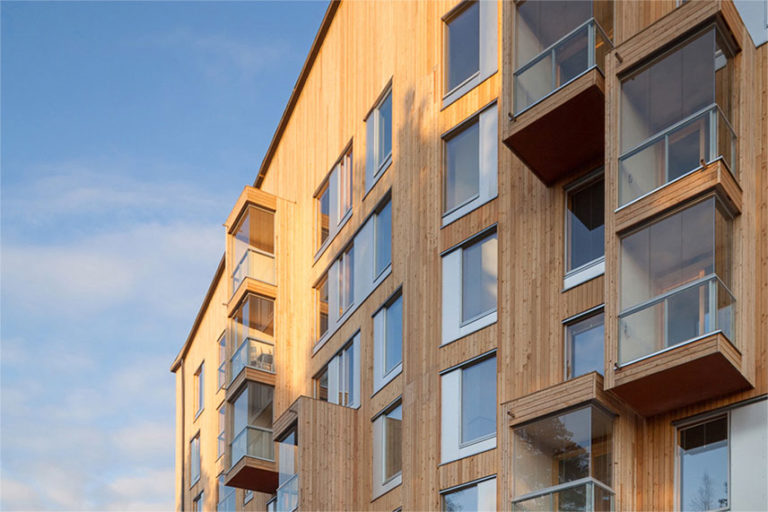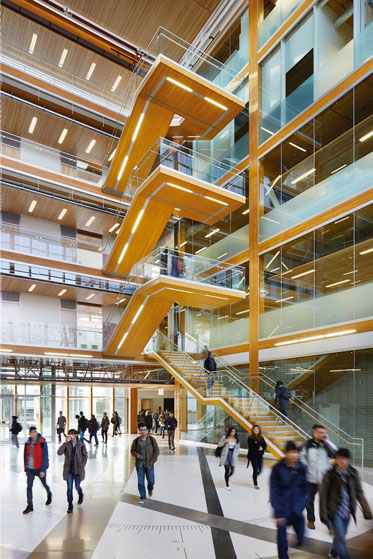 Timber construction is entering a new era. Through the establishment of new and innovative ways of working with wood there has grown an alternative flexible and environmentally responsible way to construct buildings. Leading the way and creating a new buzz in construction behavior and design is CLT or Cross Laminated Timber. This new form of processing timber for large scale construction was introduced in the early 1990’s in Austria and Germany and has become increasingly popular as one of the main construction materials of choice for both designers and builders, predominantly in the residential and commercial sectors. CLT is made by producing large wall and floor panels, load bearing beams and other construction members from lengths of timber which are compressed together using an adhesive and then pressure treated. The extra strength that comes from this construction material is developed out of the way the timber is laid together during the compression process, in a cris-cross fashion, where alternate lengths are placed at a 90 degree angle to each other. It’s also proven that for extra load and bearing strength there should be more vertical lengths of timber in the CLT building section being used (see diagram 1). |
||||||||||||||||||||||||
 Various tests have been carried out on CLT structures and it has shown to be capable of withstanding extreme pressures. One such test took place in Japan where a 5 storey CLT building was place on an earthquake shake table and subjected to three earthquakes with different seismic strengths. The building withstood all three tests with minimal damage. Various tests have been carried out on CLT structures and it has shown to be capable of withstanding extreme pressures. One such test took place in Japan where a 5 storey CLT building was place on an earthquake shake table and subjected to three earthquakes with different seismic strengths. The building withstood all three tests with minimal damage.
One of the reasons that CLT can withstand these intense forces is its structural weight; an earthquake is triggered by the ground moving by the power of seismic waves causing the foundation to shake. The forces generated are relative to the weight of the building so the overall scale of the forces that a building must resist is less for lighter buildings and CLT is a lot lighter than concrete, steel or brick. |
||||||||||||||||||||||||
| There are already a number of CLT buildings in existence and they prove to be economically viable as well as architecturally exhilarating. The fact that CLT construction material is a lot lighter than concrete and steel gives it a greater flexibility in both its construction and where these buildings can be situated, ground doesn’t have to be as firm as it is for other construction types.
Below are links to some resources with more information on CLT
|